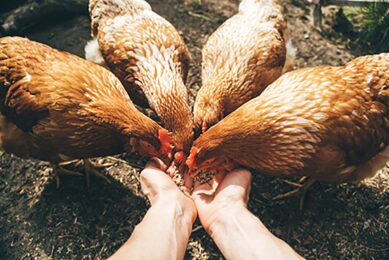Bird flu genes found in new swine flu
The new strain of swine flu has a molecular twist: it is composed of avian and swine influenza genes.
The swine flu has been identified by researchers as a new strain of swine influenza – H2N3 – which belongs to the group of H2 influenza viruses that last infected humans during the 1957 pandemic.
Several Agricultural Research Service (ARS) veterinarians conducted this research with a group of other scientists from around the country. The veterinarians of the ARS, the US Department of Agriculture’s chief scientific agency, work at the agency’s National Animal Disease Center in Ames, Iowa.
Several Agricultural Research Service (ARS) veterinarians conducted this research with a group of other scientists from around the country. The veterinarians of the ARS, the US Department of Agriculture’s chief scientific agency, work at the agency’s National Animal Disease Center in Ames, Iowa.
Avian related unknown pathogen
The research team studied an unknown pathogen that in 2006 infected two groups of pigs at separate production facilities. Both groups of pigs used water obtained from ponds frequented by migrating waterfowl. Molecular studies indicated the unknown pathogen was an H2N3 influenza virus that is closely related to an H2N3 strain found in mallard ducks. But this was the first time it had been observed in mammals.
The research team studied an unknown pathogen that in 2006 infected two groups of pigs at separate production facilities. Both groups of pigs used water obtained from ponds frequented by migrating waterfowl. Molecular studies indicated the unknown pathogen was an H2N3 influenza virus that is closely related to an H2N3 strain found in mallard ducks. But this was the first time it had been observed in mammals.
Influenza viruses have eight gene segments, all of which can be swapped between different virus strains. Two of these gene segments code for virus surface proteins that help determine whether an influenza virus is able to infect a specific host and start replicating – the first step in the onset of influenza infection.
Mixing segments
In the newly isolated swine H2N3, the avian H2 and N3 gene segments mixed with gene segments from common swine influenza viruses. This exchange – and additional mutations – gave the H2N3 viruses the ability to infect swine. Lab tests confirmed that this strain of H2N3 could also infect mice and ferrets.
In the newly isolated swine H2N3, the avian H2 and N3 gene segments mixed with gene segments from common swine influenza viruses. This exchange – and additional mutations – gave the H2N3 viruses the ability to infect swine. Lab tests confirmed that this strain of H2N3 could also infect mice and ferrets.
These findings provide further evidence that swine have the potential to serve as a ‘mixing vessel’ for influenza viruses carried by birds, pigs and humans.
It also supports the need to continue monitoring swine – and livestock workers – for H2-subtype viruses and other influenza strains that might someday threaten swine and human health.
Related websites:
Agricultural Research Service (ARS)
US Department of Agriculture (USDA)
National Animal Disease Center (NADC)
Agricultural Research Service (ARS)
US Department of Agriculture (USDA)
National Animal Disease Center (NADC)













